Activist Mothers in Hsinchu Fight for Clean Water – Do Microchips Matter More than People?

Source:Ming-Tang Huang
Are you filtering your water or even buying bottled water for drinking and cooking? Why does clean water, safe for human consumption, remain a luxury for many in Taiwan? Eager to find out why their local water source, the Touqian River, is so polluted, a group of activist mothers from Hsinchu went trekking upstream, discovering an overflowing landfill, industrial wastewater effluents and badly mismanaged water rights.
Views
Activist Mothers in Hsinchu Fight for Clean Water – Do Microchips Matter More than People?
By Rebecca LinFrom CommonWealth Magazine (vol. 700 )
Liu Ni-yun still vividly remembers the scene she encountered three years ago as if it was yesterday.
“I truly couldn’t believe my eyes, that there could be so much trash that it overflows the site,” Liu recalls her feelings as she stood in front of the notorious garbage mountain in Zhudong, flanked by fellow mothers in arms from Hsinchu – Chen Tsui-chin, Peng Kuei-chi, Chen Ching-ling and Cheng Yu-yu. The mountainside was buried under a large mass of food waste, soiled diapers and plastic bags, with swarms of flies buzzing around the foul-smelling dump.
The Zhudong garbage mountain sits rights next to Hsinchu County’s main source of drinking water, the Touqian River.
Braving the scorching sun and with Chou Chiang-chieh, then a Hsinchu County councilor, serving as their guide, the group walked half an hour to the place where the tributaries of the Shangping River and the Youluo River meet to form the Touqian River. Ninety percent of Hsinchu City’s water supply is drawn from the 63-kilometer-long river, which flows through Hsinchu County into Hsinchu City.
The women were so shocked by what they saw that they were at a loss for words.
But the shock spurred them to action. Not long afterwards, they founded an advocacy group called the “We Want to Drink Clean Water Action Alliance”. They surveyed the situation, walking the entire distance along the Touqian River from the Shangping Weir upstream to the Nanya water intake point downstream during more than 100 field trips. Armed with this detailed information about the true face of Hsinchu’s main river, they filed a complaint with the Control Yuan, Taiwan’s government watchdog, claiming that “industry drinks good water while the people drink wastewater.”
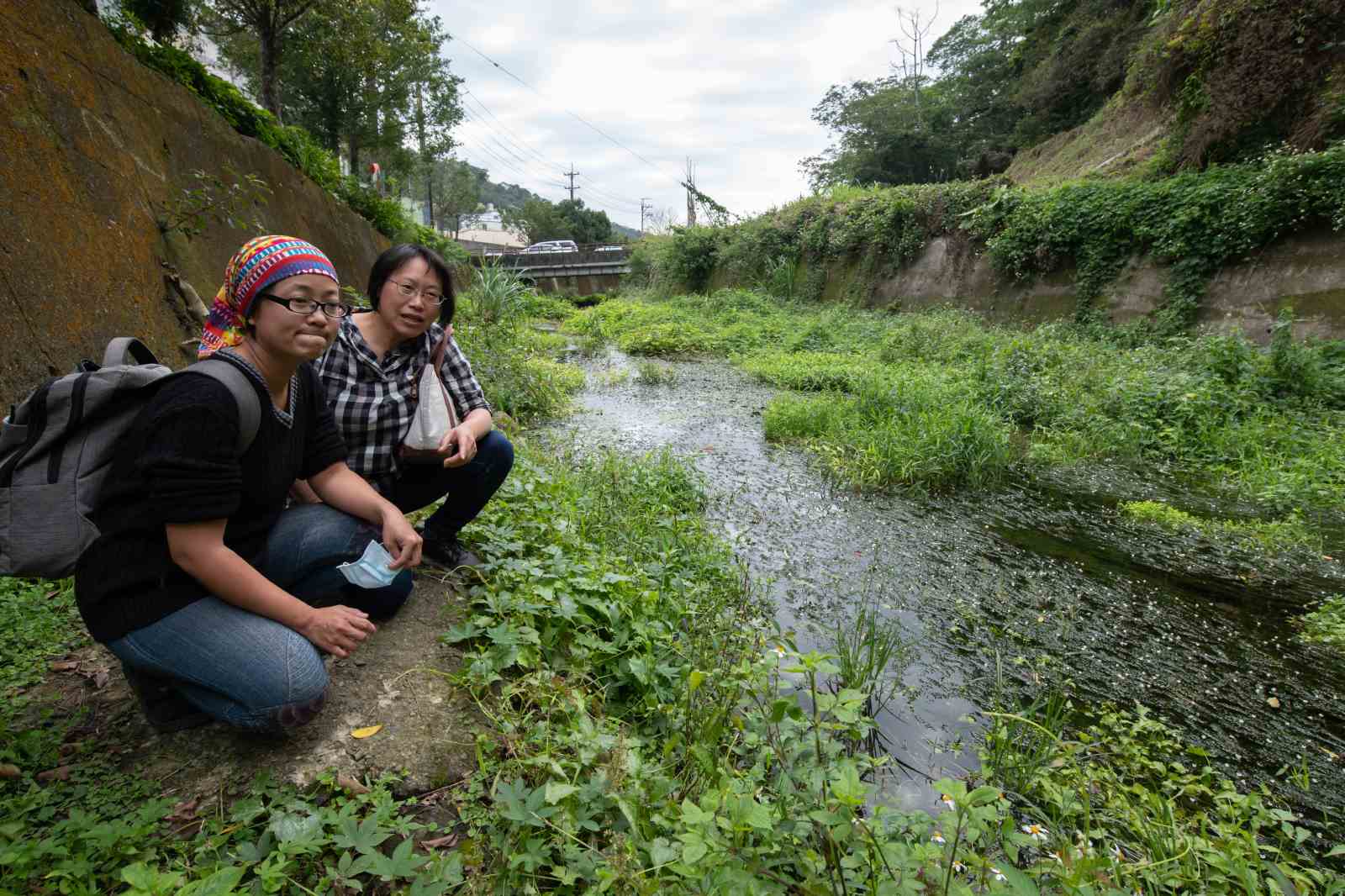
Last August, a Control Yuan report confirmed that their concerns were justified.
“The Taiwan Water Corporation keeps saying that this water meets standards,” notes Control Yuan Member Tien Chiu-chin, who was in charge of the investigation, while pointing at a map of the Touqian River system. “But midstream and upstream there is a landfill, there is industrial wastewater, and then we also have wastewater from toilets and urinals and wastewater from food waste in private households (being discharged into this river). No one would feel the water is safe to drink,” she points out.
The Most Affluent Villages Live with Unsafe Water
The map shows that the Taiwan Water Corporation, a state utility, leads unpolluted water from Shangping Weir not far from the source of the river to Baoshan Reservoir and Baoshan Second Reservoir before it is dispatched to the Hsinchu Science Park and some towns and villages via underground pipelines. However, the water supply for 750,000 people out of the 1.01 million people living in Hsinchu City and Hsinchu County comes from the downstream Long’en Weir and the Nanya water intake point.
The Control Yuan report points out that the tap water water quality and quantity protection areas of the Touqian River system are failing systematically due to diverse and complicated land usages in its surroundings. “There is a lackadaisical approach regarding the thorough investigation and management of polluting factories…At the sanitary landfill, waste is being discarded temporarily in violation of Article 11 of the Water Supply Act, which prohibits such acts,” said the report, demanding in its conclusion that the Hsinchu County Government make corrections. At the same time, it urged the Ministry of Economic Affairs, the Cabinet-level Environmental Protection Administration and the Hsinchu City Government to make sure that the Taiwan Water Corporation explores improvements.
“Water seems to be the same everywhere, but ‘water quality’ makes the difference,” explains Chen Tsui-chin, an engineer who used to work in the Hsinchu Science Park. “Clean water has become a rare resource;not all water is the same,” she says.
Thanks to the high-paying jobs in the Hsinchu Science Park, nine out of Taiwan’s ten most affluent neighborhoods are located in the Eastern District of Hsinchu City and Zhubei City in neighboring Hsinchu County. All these communities get their tap water from the Hsinchu Water Treatment Plant, which draws raw water from Long’en Weir.
Why does the most affluent region have to put up with bad water for their everyday needs? Why has a tap water water quality and quantity protection area been delineated if the government is not able to protect water sources?
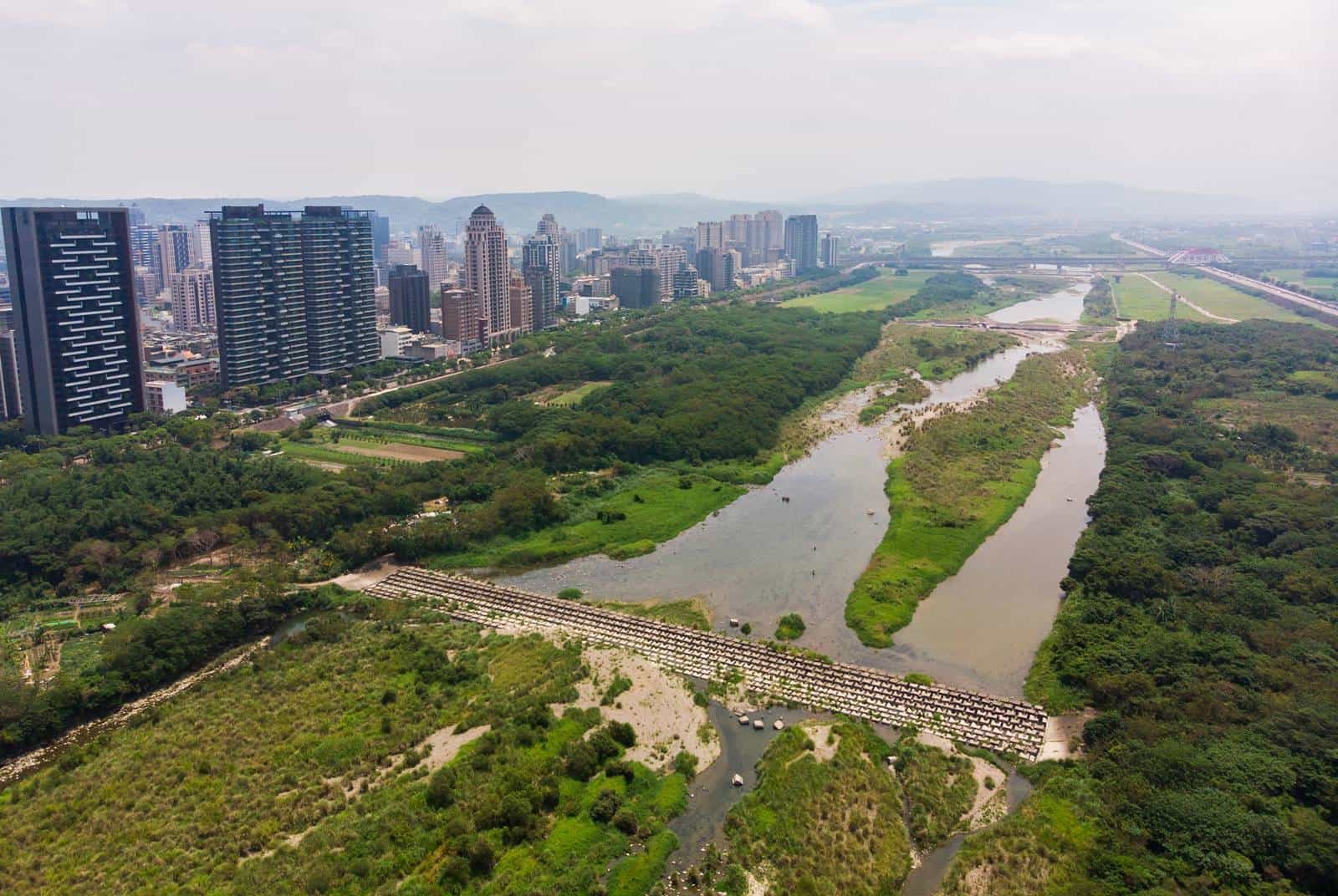
In April, a CommonWealth Magazine team made a field trip to the Shangping River, one of the upstream tributaries of the Touqian River. In 1983, an area of 522 square kilometers, roughly 92 percent of the Touqian River basin, was designated a “tap water water quality and quantity protection area” under the Water Supply Act. Article 11 of the Act stipulates: “For the purpose of protecting water sources, a water supply enterprise may apply to the central water authority…or request the authority-in-charge…to ban or restrict the following activities that would harm the water quality or quantity pursuant to this Act or relevant laws.” Listed among such activities are factories with a high potential of pollution, landfill construction, dumping, placing or discarding garbage, and discharging wastewater that exceeds prescribed standards or quantities.
The river meanders downhill from mountainous Wufeng Township in Hsinchu County to enter a diversion gate at Shangping Weir, where the stream is split in two, with one side being diverted toward Zhudong Canal to serve as irrigation water and the other being sent into Baoshan Reservoir where it is further diverted to Baoshan Second Reservoir. Following treatment at the Baoshan Water Treatment Plant, 160,000 tons, or more than half of the daily supply of 294,000 tons of treated water are sent to the Hsinchu Science Park, while the remainder goes to towns and villages near the reservoir.
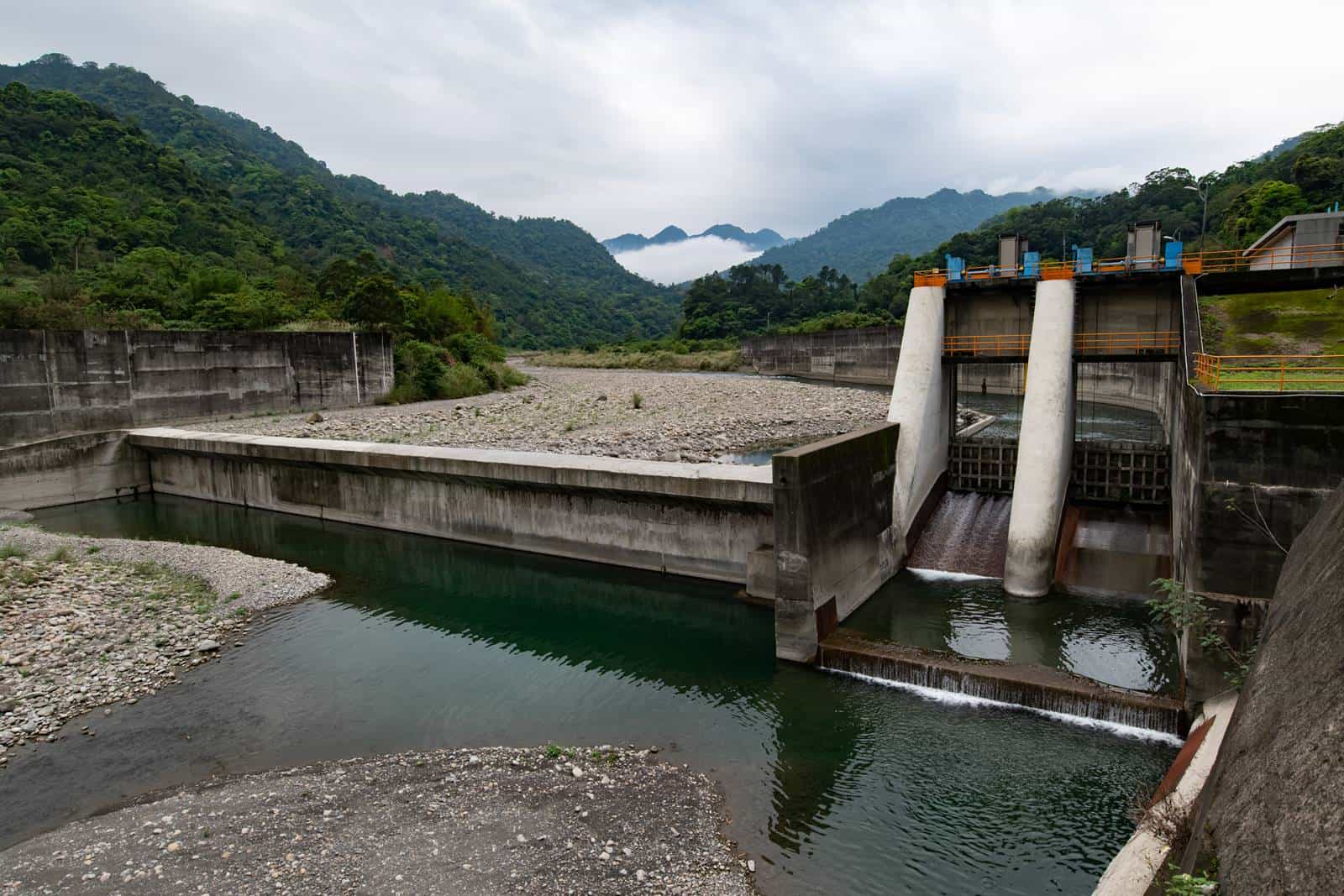
“You reach the Touqian River only after walking downhill along the Shangping River,” explains Tai Wei-chun, a volunteer with the action alliance.
After arriving in the town of Zhudong further upstream on the Touqian River, the CommonWealth team left the downtown area and ventured into the hills, where we encountered the garbage dump.
Several yellow garbage trucks were parked in the parking lot. Discarded mattresses, chairs, tables, kitchen cupboards and other household items had been abandoned nearby. From a platform next to the trash collection team that overlooks the mountainside, one could see an enormous pile of garbage, a foul, sour smell from rotting waste filling the air.
Mismanagement 1: No Waste Incinerator
Hsinchu County Drowns in Garbage as Landfill Bursts at the Seams
Zhudong’s sanitary landfill opened in 1976 and was sealed in 2006 after reaching its capacity. Yet the Hsinchu County Government nevertheless continued to send garbage to the site, presumably for “temporary placement”. When the Control Yuan intervened in September of 2017, conducting an investigation, it found that around 5,000 tons of garbage had been placed at the site. By the following May, the garbage mountain had grown to 6,300 tons.
After the Hsinchu County Government enlisted the support of the incineration plants in Hsinchu City and Miaoli County, most of the garbage mountain was cleared by the end of last year. But as Lo Shih-chen, the acting director-general of the Hsinchu County Environmental Protection Bureau, admits, waste from Zhudong had to be temporarily placed at the landfill again in February and March, when the incineration plants were closed for routine maintenance. It is expected that this time the garbage can be shipped out for incineration before July.
Garbage disposal remains a nightmare for the county because it does not have its own incineration plant. Sixty percent of the 243 tons of garbage that Hsinchu County produces per day is trucked to Hsinchu City, while the remaining 40 percent are sent to Miaoli County for incineration.
Incinerators become less efficient over time. Older plants therefore need to undergo two maintenance circles per year. During these periods, garbage keeps piling up with no place to go.
Hsinchu County Environmental Protection Bureau statistics show that 37,000 tons of garbage had accumulated in the county last March. This April, the trash volume had ballooned to 53,000 tons.
Mismanagement 2: Industrial Zones Inside Water Protection Areas
Within the tap water water quality and quantity protection area of Touqian River, not only has the garbage problem gotten out of control, but there is also a sprawling industrial zone. From Zhudong’s garbage mountain, it takes only 12 minutes by car to get to the Wuhua Industrial Park in rural Qionglin Township. The road is flanked by the picturesque Luliaokeng River on the left and unsightly corrugated iron sheds and concrete structures on the right.
The Wuhua Industrial Zone was delineated as a Type D industrial zone in 1977. In its early days it mainly housed food processing companies.
Meanwhile, however, a cluster including a scrap metal treatment plant, chemical solvent manufacturer, microchip plant, display maker, and an electroplating factory has formed in the river’s vicinity.

In its investigation, the Control Yuan points out that although under the Water Supply Act industrial polluters are not allowed in the Touqian River water protection area, six such factories are in fact located there, including cement manufacturers Asia Cement Corporation and Goldsun Building Materials Co. Ltd., tech companies Sigurd Microelectronics Corporation, Sibase Technology Co. Ltd., Micro Silicon Elecs. Corp. as well as wafer packaging company Winstek Semiconductor Corporation, which is based in the Wuhua Industrial Zone.
Winstek has become the clean water action alliance’s main target given that the factory produces 1,390 tons of wastewater effluents per day.
“They have locked the effluent discharge point; we need to conduct our own water quality monitoring,” explains Liu as she and fellow activist Cheng walk gingerly down the slippery, moss-covered stairs to the riverside. “We take samples here where the water comes down from the discharge point and then again at a small tributary further downstream,” she explains. According to data from the local Environmental Protection Bureau, Winstek’s effluents and related tests meet standards, but the women continue to take their own samples for testing.
They wonder whether the fact that the data meet standards can be taken as an assurance that the water is safe. The Control Yuan, for its part, is pointing fingers once again at the Hsinchu County Government.
Mismanagement 3: Governments Passing the Buck
One River, Ten Laws, Conflicting Agendas
“Not until we launched the alliance in 2018 did we find out that the Hsinchu County Government did not know clearly which polluting factories were located within the [water protection] area,” recalls Tien. “What shocked me most was that they thought they didn't need to do anything about the factories that had been there before the delineation of the water quality and quantity protection area because the law is not retroactive. But they were wrong.”
The Water Supply Act stipulates very clearly that use of buildings or land in a water quality and quantity protection area that is deemed harmful to the water quality or quantity must be removed, improved or changed within a specified period, and the owner or user must be compensated for resulting losses by the water supply enterprise. “But the competent authorities do not take action because their superiors don’t care,” believes Tien. “Why? Because this isn’t the water that they themselves drink.”
Conflicting agendas and accountabilities make the protection of water supply a thorny problem.
In terms of administrative borders, the Touqian River’s upper and middle sections are located in Hsinchu County, but Lung’en Weir and the Nanya water intake point, which supply 750,000 people, are located in Hsinchu City and mainly serve city residents. Control over what kind of water the Hsinchu people get to drink can be said to be firmly in the hands of Hsinchu County.
On the legal side, the situation is even more complex. The Water Supply Act falls under the jurisdiction of the Water Resources Agency of the Ministry of Economic Affairs. But there are more than ten other laws and regulations that pertain to water quality, such as the Soil and Water Conservation Act, the Forestry Act, the Waste Disposal Act and the Water Pollution Control Act. The relevant government agencies in charge of enforcing these laws keep passing the buck or making excuses, citing shortages of personnel or money, a longstanding issue.
Ironically, the Touqian River has maintained an outstanding position among Taiwan’s rivers throughout its history. But the drinking water habits of the people of Hsinchu paint a clearer picture of the true situation.
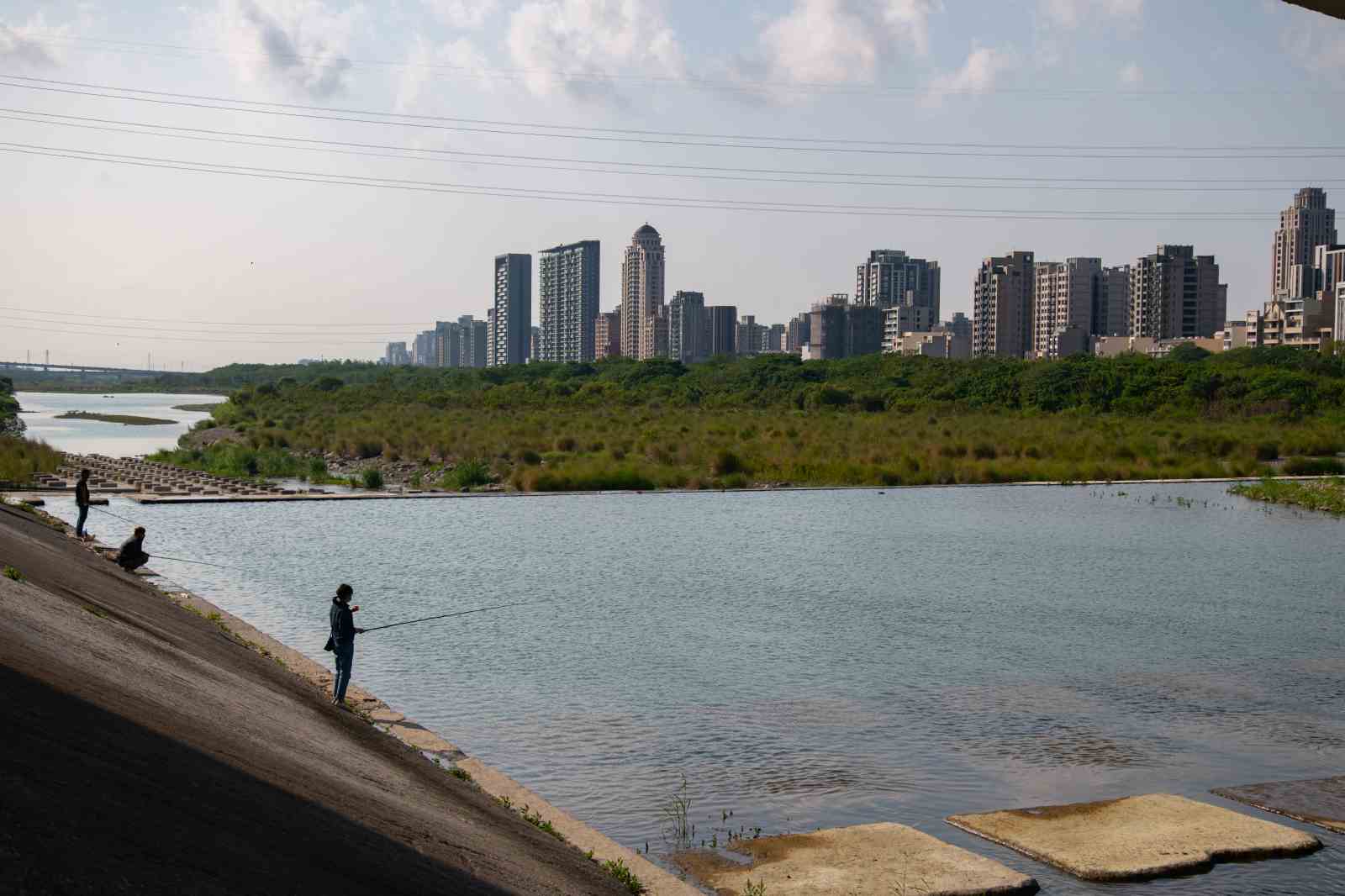
“Buying water on a daily basis is part of our everyday life,” affirms alliance member Cheng.
Despite official figures claiming that Hsinchu has the best water sources and water quality, the locals continue to buy [treated] water every day. This is probably because none of the scientific data can counter people’s gut feeling that their tap water is not clean.
Ling Yong-chien, professor at the Department of Chemistry at National Tsing Hua University, notes that river water quality monitoring is based on results from the testing of samples that are taken at a fixed time and place every year. “If water quality were stable, we would believe [in this data]. But this is not the case for the Touqian River and most of the tap water water quality and quantity protection areas.”
Ling says the team discovered in the course of several tests that water quality is volatile, meaning it can suddenly exceed standards such as becoming too acidic or extremely alkaline. “This means that factories have skipped the chemical neutralization step [to balance excess acidity or alkalinity] before releasing their wastewater. This causes acute toxicity to aquatic life and its sudden death. Preliminary screening using chemical methods also discovered extremely high electric conductivity,” says Ling.
What these findings tell us is that the official data should not rely on averaged indicators to assess the year-round water quality of an entire river.
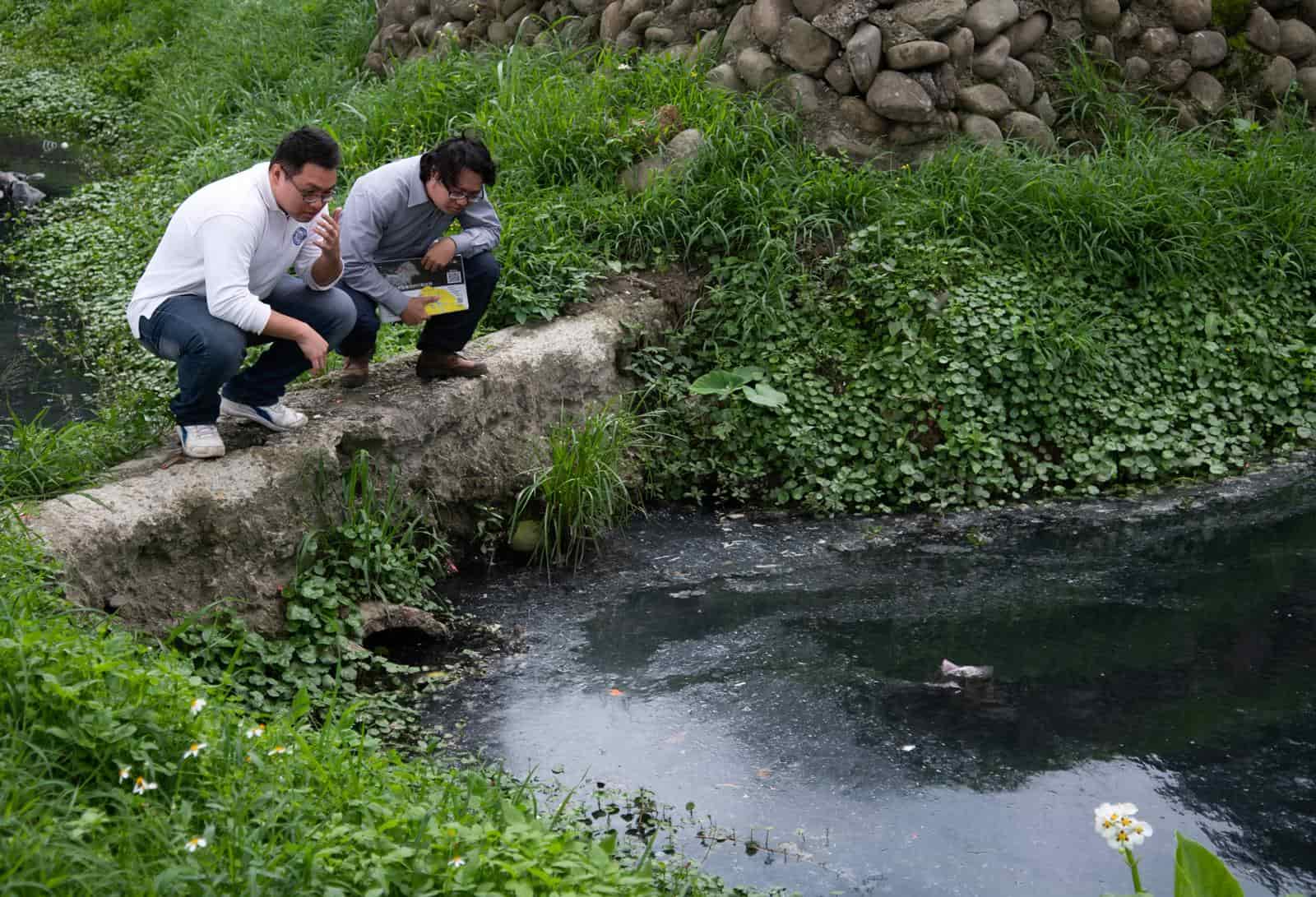
Given that novel chemical substances are introduced and replaced quickly as manufacturers develop new processes, testing items and standards can often not keep pace with technological progress. “The quality of raw water is already unstable, and when abnormalities are found several times, the causes are not properly investigated,” says Ling. “This way you will have difficulties convincing people that the water they drink is okay.”
Rivers not “Large Intestine” but “Esophagus”
“In the past, everyone discharged waste and pollutants into the rivers in the belief that dumping into streams has nothing to do with us,” remarks Lai Chien-hsin, director-general of the Water Resources Agency. “We should change our thinking; a river is not a ‘large intestine’ but rather an ‘esophagus’.”
He believes that from now on we will probably see rivers in a different light because everything we discard into a river might come back to us in the form of the water that we drink every day.
Lai is aware of the problem and is working on a solution. In a nutshell, Hsinchu has two problems: Baoshan Reservoir and Baoshan Second Reservoir provide good water quality but have insufficient storage capacity to supply the entire area. And locals don’t trust the quality of the water coming from the downstream Long’en Weir and Nanya water intake points.
That’s why a plan to bring 200,000 tons of water from Shihmen Reservoir in Taoyuan to Hsinchu was born in 2018. The Taiwan Water Corporation used funds from the Forward-looking Infrastructure Development Program to lay a 26.3-kilometer-long dedicated pipeline from Shihmen Reservoir to supply Hsinchu with water.
In its water supply blueprint for northern Taiwan, the Taiwan Water Corporation uses a joint allocation system involving several reservoirs. The Banxin area of New Taipei City, which originally got its water from Shihmen Reservoir, is now served by Feitsui Reservoir, while Shihmen Reservoir supplies Hsinchu. As a next step, Lai plans to build a pipeline from Long’en Weir to dispatch water to the Hsinchu Science Park.
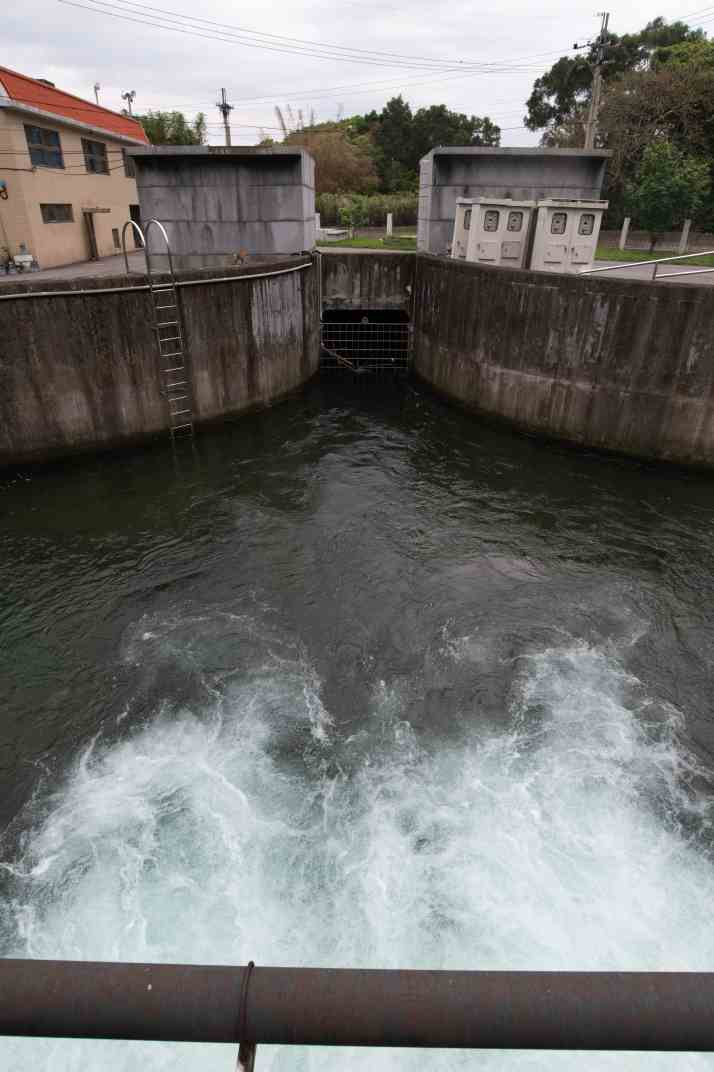
Clearly, the government’s resolve and actions are crucial if the water situation is to improve.
After the Control Yuan published its report, the six factories that were identified as polluters were given guidance by the Hsinchu County Government. Micro Silicon Elecs. agreed to relocate its polluting processes to its Zhunan plant. Goldsun Building Materials and Sigurd Microelectronics have proposed plans for the relocation of their plants, Asia Cement will throttle production at its Hsinchu plant and increase the wastewater recycling rate. Winstek will also raise the wastewater recycling rate, first from 60 percent to 70 percent with the aim to eventually reach 85 percent.
The Hsinchu County Government is also planning to build its own incineration plant, hoping to solve its garbage overflow problem for good.
Activist Mothers Push Government and Companies for Change
The activist mothers of the “We Want to Drink Clean Water Action Alliance” became the lever that moved the lethargic bureaucratic system.
For decades, no one cared about the water quality in Hsinchu and no one attempted to solve the sticky problem until they toured Hsinchu on fact-finding trips and began to speak up for clean water.
Three years after they brought the matter to the attention of the Hsinchu County Government, the Ministry of Economic Affairs and the Control Yuan, the concerted effort of these combative mothers eventually paid off, turning the situation around.
Yet Control Yuan member Tien, who has been active in the environmental movement for many years, cannot help but feel regret over many missed opportunities: “The Taiwan Water Corporation needed to spend NT$2.78 billion laying a pipeline from Shihmen Reservoir to Hsinchu. If relevant agencies had conducted their affairs according to the law, after the tap water water quality and quantity protection area was delineated, they wouldn’t have had to take so many remedial measures,” she concludes.
Who Monitors Your Drinking Water?
Instead of resting on their laurels, the mothers of the action alliance continue to fight for regulatory change. They have already collected more than 5,000 signatures to initiate a local referendum. If passed, the Hsinchu City Government would have to formulate Wastewater Management Regulations that ban the discharge of industrial and domestic wastewater into waters upstream of drinking water intake points.
It is a battle that will decide the quality of the local drinking water. And the Hsinchu people hold the key to safer water in their hands.
Have you read?
♦ Post COVID-19, Time to Make Peace with Our Earth
♦ Will a 20-Year-Old Forest be Chopped Down to Produce Solar Power?
♦ RSPRC: Green Transition Should Be Integral to Taiwan's Stimulus Plan
♦ Taiwan’s Renewable Market Revolution Taking Shape
Translated by Susanne Ganz
Edited by TC Lin
Uploaded by Judy Lu






